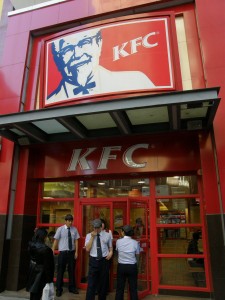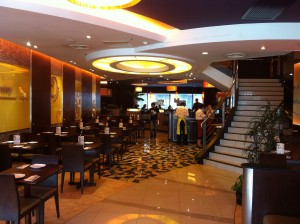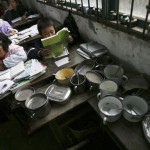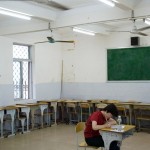By Dan Guin and Sam Jones
Fast Food Chains such as KFC and Pizza Hut conjure up many images inside an American’s mind. Usually the latter reminds us of those strange red booths with cracked faux-leather, and a strange 80’s wood theme throughout the restaurant. It is not the most romantic place to go on a date. Dig about 8,000 miles through the Earth, and you would find a stark difference between the Pizza Huts of America, and the Pizza Huts of China.

Unlike its American cousin, usually known for its cheap and passable pizza, Pizza Hut in China is known for its unique and experimental pizzas, an upper-middle class clientele, and as a place that many teens take their dates on. Pizza Hut in China is obviously not the brand we know and (love?) here in America, so we were curious as to the motivation between the sharp shift in branding.

To understand this however, we need to take a glance at the beginning of the fast food revolution in China. American Fast Food chains, like a modern day manifest destiny with a greasy twist, entered the Chinese restaurant market in 1987, with KFC opening its first Chinese branch in Beijing. McDonalds followed soon after, and these two fast food chains became the number 1 and 2 top fast food restaurants in China, respectively (Big Mac: Inside the McDonald’s Empire). By 2002, 80% of Chinese citizens had eaten at one of these fast food restaurants. But why the rapid expansion? Researchers at the Oxford Club speculate that this may be due to the rapid expansion of the middle class, as well as grueling work hours, causing many to not be able to eat at home. Researchers also wonder that if marriages, now happening later in life, are having a meaningful impact on fast food sales.
This brings us back to our original question. Why does Pizza Hut look so different in China? What it comes down to is the demographic. When fast food first came out in China, it could only afford to cater to the upper middle class/upper class citizens. Now that the standard of living and general wealth have increased, a larger portion of citizens are now able to eat fast food without the fast food company having to drop quality or class.
Though growth is slowing, the future of fast food in China is bright, with millions of potential customers ready for a slice of pizza.
Citations







